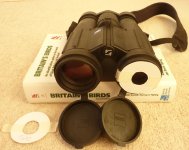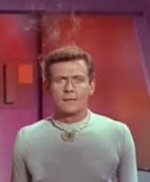You will see better in low light with an 8x56 than you can with your own eyes, which is not so with an 8x42. That huge 56 mm aperture makes a big difference in low light. That is why hunters that hunt in low light use an 8x56 like hog hunters.
I want to comment about this. Providing you can make use of the entire exit pupil 8x56 is indeed brighter than 8x42. But already above 40 years age many have not still 7mm eye pupil.
Even if you have max 5,25mm eye pupil, the same as exit pupil of 8x42, 8x56 can still have an advantage because you don't use the edges of exit pupil. This is explained in some article, I don't have a link just now, though. How noticeable the difference is may be debateable.
And the reason you in any case see better in low light with a binocular than naked eye is because of the magnification. An optical system can never provide a brighter image than the naked eye. At most 96% of naked eye with the brightest prism binocular. A galilei binocular should be able to reach even higher transmission.
So if you have max dilated eye pupil of 7mm and use a 8x56 you of course see better than naked eye. But you see even better with naked eye at 1m than with 8x56 at 8m, because the observed object has the same apparant size but is slightly brighter because of the lack of light loss through the optical system.
BUT: there is a reason you in some cases can get the impression the view in the binocular is brighter. With naked eye there is often stray light reaching your eye from the sides from light sources, worsening the low light vision. And when you put the binocular to your eyes these become usually, more or less, blocked.
Last edited:









